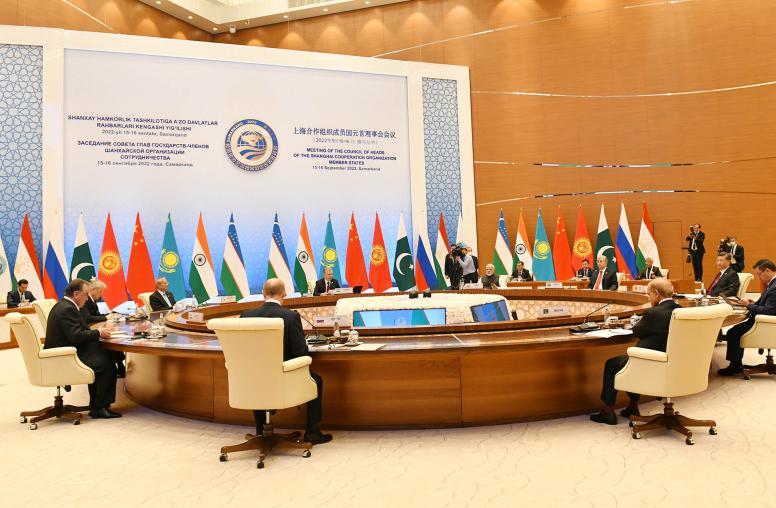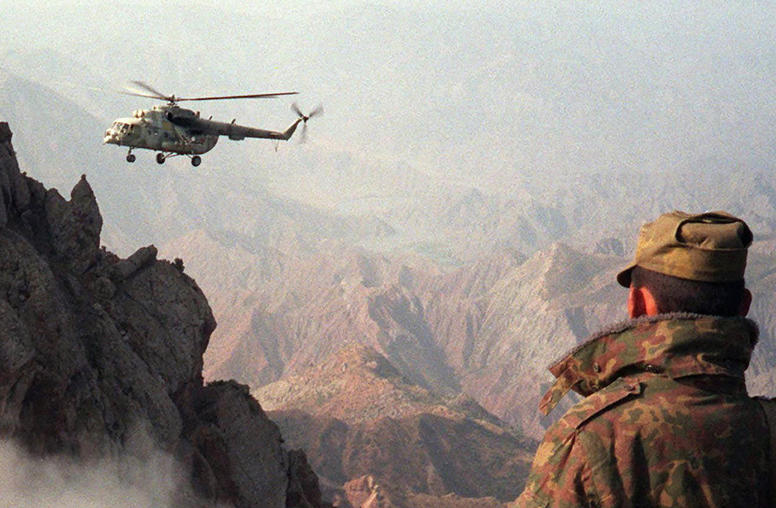The War in Tajikistan Three Years On
As many as 50,000 people have died and thousands more have been wounded and made homeless by the civil war that has raged in Tajikistan, the poorest of the Central Asian republics of the former Soviet Union. On June 6, 1995 the United States Institute of Peace organized a forum on the Tajikistan conflict to explore prospects for negotiations and an end to the war. It included Ambassador Stanley T. Escudero, who had recently completed three years as the chief U.S. representative in the Tajik capital, Dushanbe, and French scholar Olivier Roy, now at the French National Center for Scientific Research and former head of mission in Tajikistan for the Organization on Security and Cooperation in Europe.

Key Points
- Players. The main Tajik actors in the stalemated conflict are the Kulyabi- dominated Tajik government and the various opposition forces challenging the power structure established during the Soviet era. Neither side can be said to be united, however, as those from the Khojand region formerly allied to the Kulyabis are unhappy at having been pushed from power, and the increasingly public schisms in the opposition may weaken its ability to engage in military actions and reach a coordinated negotiating position within the UN-sponsored negotiations.
- Sources of the Conflict. Ideology is not a factor in the Tajikistan war. Rather, it is a power struggle among different regions of the country for access to political and economic spoils. Thus, it is not a clear-cut case of "good guys" against "bad guys."
- Role of Russia. Russia continues to be the most important non-Tajik actor. Russian troops present in the country since Soviet days have been active, and Russia is heavily engaged in supporting the current Tajik government militarily and economically. In addition, Russian border troops remain directly engaged in combat on the Tajik-Afghan border. The Russians have claimed to be fighting "Islamic fundamentalism," though some observers dispute its relevance in this conflict. Russia is the one actor that can put pressure on the Tajik government in the negotiations, but it has been unwilling to do so, thus far.
- Fighting Intensifies. In April, 1995, serious battles broke out between opposition forces stationed in Afghanistan and Tajik government and Russian troops. The fighting was in part a response to the increased unwillingness of the Russian border troops to pursue opposition forces located well over the border in Afghanistan. The fighting is also a result of the Russians' success in cutting off some of the opposition's infiltration routes into Tajikistan. There is some indication, however, that the scale of many of the border skirmishes are exaggerated in the Russian soldiers' accounts, as they have various incentives to claim to have seen combat.
- Outside Actors. The neighboring Central Asian state of Uzbekistan, fearing a spillover of Islamic activism and Tajik nationalism, initially backed Russia's policy of supporting the old-guard forces in the Tajikistan conflict. Now that the Uzbek leadership has eliminated virtually all opposition in its own country and sees no danger from the events in Tajikistan, Uzbekistan is hoping to become the broker of a resolution to the Tajik conflict. Iran, which takes a pragmatic stance toward Tajikistan, has always supported Russian involvement, as it has no interest in seeing any other influence there, either from Turkey or the other Turkic states in Central Asia, including Uzbekistan.
- Negotiations. UN- sponsored negotiations have taken place intermittently since mid-1994. However, little progress has been made on the main political issues, as neither side is prepared to negotiate in terms that would be acceptable to the other. The Tajik government bases its authority on having won the war and on the recently held, though tightly controlled, presidential and parliamentary elections, as well as a referendum on a new constitution. The opposition rejects the legitimacy of the elections and demands the resignation of the current government and the establishment of a state council on which it would have representation, a position to which the government says it will never agree. The most recent round of negotiations was held in Almaty, Kazakhstan, from May 22 through June 1, 1995, and though some agreements on an extension of the ceasefire and the return of refugees were reached, the principal issues remain.
- Prospects for Peace. Russia is seen as a key to breaking the current stalemate. Some change in Tajik leadership is needed, as several regions of the country probably will never accept the legitimacy of the current leaders. The negotiations, however slow-moving, must be continued, as the alternative is the possibility of a renewed, wider civil war. Small steps, such as ceasefire extensions and prisoner exchanges, are occurring. But any negotiation process rarely moves rapidly; people in Tajikistan were particularly brutalized in this war and they will not forget very easily. Thus, progress in the negotiations will perforce be intermittent.
About the Report
As many as 50,000 people have died and thousands more have been wounded and made homeless by the civil war that has raged in Tajikistan, the poorest of the Central Asian republics of the former Soviet Union. It was the bloodiest conflict in the aftermath of the Soviet collapse, until Chechnya. But the torment in Tajikistan was obscured by the carnage in the Balkans and Chechnya. A military stalemate and a cease-fire have produced a fragile moment of peace that has periodically been marred by fighting and could be fully shattered by any of the forces, in addition to the Tajik government and the opposition, competing for influence and power--Russia, Iran, Uzbekistan, opposition supporters in Afghanistan, and even ubiquitous arms and drug smugglers who profit from the conflict.
On June 6, 1995 the United States Institute of Peace organized a forum on the Tajikistan conflict to explore prospects for negotiations and an end to the war. It included Ambassador Stanley T. Escudero, who had recently completed three years as the chief U.S. representative in the Tajik capital, Dushanbe, and French scholar Olivier Roy, now at the French National Center for Scientific Research and former head of mission in Tajikistan for the Organization on Security and Cooperation in Europe. This report is based on that forum. For further information, please contact Patricia Carley.



